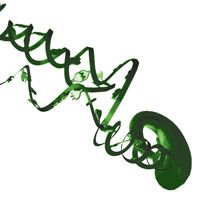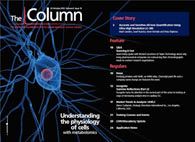Multiple reaction monitoring atlas
Scientists at the Swiss Federal Institute of Technology, in collaboration with the Institute for Systems Biology in Seattle, Washington, USA, have created assays for approximately 20?000 human proteins, generating what is claimed to be the world?s first human Multiple Reaction Monitoring Atlas.

Scientists at the Swiss Federal Institute of Technology (ETH Zurich), in collaboration with the Institute for Systems Biology in Seattle, Washington, USA, have created assays for approximately 20 000 human proteins, generating what is claimed to be the world’s first human Multiple Reaction Monitoring (MRM) Atlas. Scientists around the world will be able to use this atlas to significantly advance biomarker research, protein-based drug development and fundamental biological and biomedical research.
The project used Agilent’s triple quadrupole and quadrupole time-of-flight LC–MS systems, nanoflow HPLC-Chip–MS systems and protein analysis software. “In recent years, we’ve devoted a great deal of effort to developing highly sensitive and selective proteomics tools for research,” said Gustavo Salem, Agilent vice president and general manager, Biological Systems Division. “We’re delighted to see them being used to such great effect for this vital work.”
The development of the atlas was also dependent on AB SCIEX QTRAP technology, which combines the quantitative MRM capabilities of normal triple quadrupole systems with advanced linear ion trap capabilities for protein identification and confirmation in a single analysis.
Ruedi Aebersold, PhD, Professor, Institute of Biotechnology at the Swiss Federal Institute of Technology stated, “This accomplishment by a dedicated group of scientists is an important milestone and will improve our understanding of the analysis of the human proteome. We could not have developed the MRMAtlas as quickly and productively without QTRAP technology.”
The data will be made accessible to the research community through the ISB/ETH SRMAtlas database (www.srmatlas.org) as part of theISB/ETH PeptideAtlas (www.peptideatlas.org) project.
This story originally appeared in The Column. Click here to view that issue.
New Method Explored for the Detection of CECs in Crops Irrigated with Contaminated Water
April 30th 2025This new study presents a validated QuEChERS–LC-MS/MS method for detecting eight persistent, mobile, and toxic substances in escarole, tomatoes, and tomato leaves irrigated with contaminated water.
University of Tasmania Researchers Explore Haloacetic Acid Determiniation in Water with capLC–MS
April 29th 2025Haloacetic acid detection has become important when analyzing drinking and swimming pool water. University of Tasmania researchers have begun applying capillary liquid chromatography as a means of detecting these substances.

.png&w=3840&q=75)

.png&w=3840&q=75)



.png&w=3840&q=75)



.png&w=3840&q=75)










